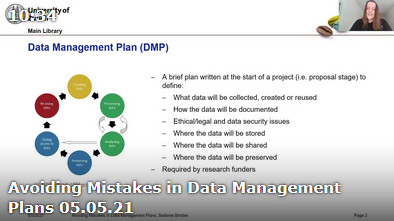This post is also available in:
 Deutsch
Deutsch
Most research funders, including the SNSF, will ask you to submit a data management plan (DMP) when applying for a grant. Even though the DMP is not part of the scientific evaluation of your proposal, it can still be rejected, or you can be asked to make revisions. Avoid the most common mistakes below, and make sure this does not happen.
Mistake #1: Insufficient Information on Data Sharing
Solution: Name the repository in which you are going to share your data.
Make sure the repository you choose is compliant with the FAIR data principles:
F (findable): is a unique identifier (e.g. a DOI) assigned?
A (accessible): are the citation information and (meta)data publicly accessible?
I (interoperable): are the metadata in a machine readable format?
R (reusable): can you submit intrinsic and submitter-defined metadata; can you upload or choose a license?
If you work with sensitive data, describe the concerns and explain why this data cannot be shared.
Mistake #2: Insufficient Information on Documentation
Solution: Explain how the data will be documented.
Excel files with numbers and variables have little to no meaning without proper documentation. Metadata are important because they enable your data to be read and reused properly. Identify the types of information that need to be captured to make sure your data is understandable and reusable; and check whether there are metadata community standards in your field of research. You can use software tools to manage metadata, or text files (e.g. README).
Mistake #3: Placing Embargoes on Data
Solution: Do not place an embargo on data underlying a publication.
Non-sensitive data have to be available on a repository at the time of publication of a research paper, regardless of whether you expect further publications based on the same data. Note, however, that you are only required to share data directly underlying a publication. Any additional data can also be shared, but in this case, an embargo is permissible.
Mistake #4: Lack of Structure
Solution: Make your DMP easy to read and understand.
Work with tables and/or bullet points wherever possible and avoid writing full paragraphs when describing your data(sets). Your DMP needs to make sense as an independent document; the expert reviewing your DMP and the expert reviewing the science part of your proposal are not the same person.
If you need any help with your DMP, do not hesitate to contact the Data Services team at the Main Library.

